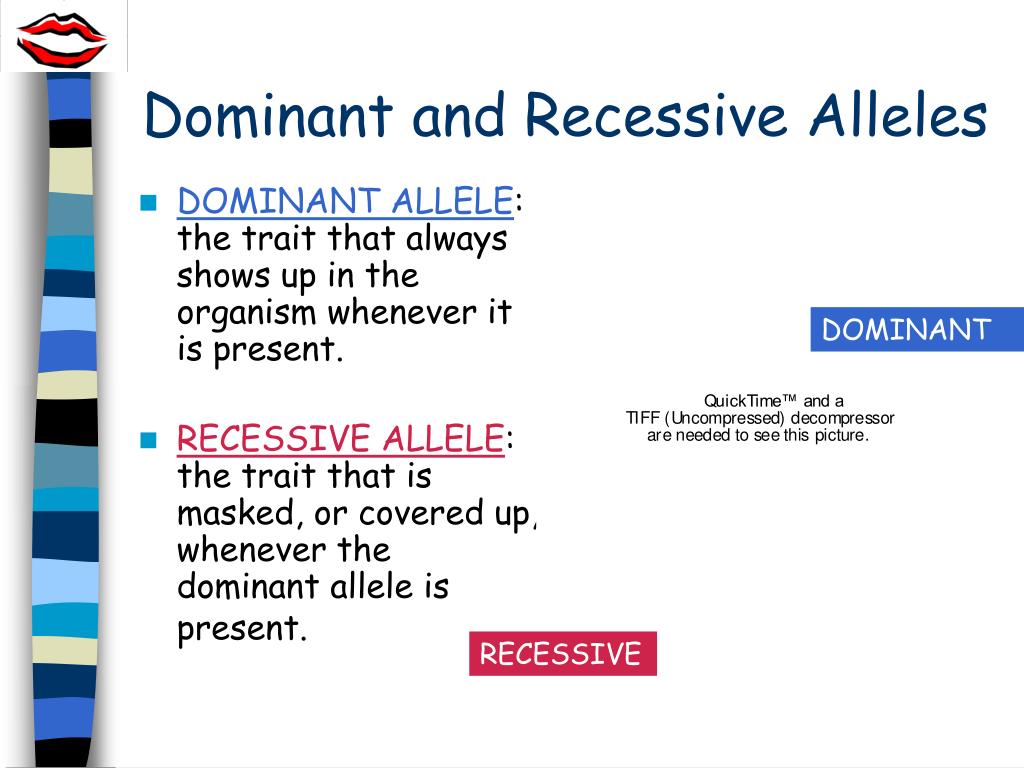

ProteinsĪffect traits, so variations in protein activity or expression can produce differentĪ dominant allele produces a dominant phenotype in individuals who have one copy of the allele, which can come from just one parent.

For a recessive allele to produce a recessive phenotype, the individual must have two copies, one from each parent. So for eye color, brown is B and blue is b. The F2 generation always produced a 3:1 ratio where the dominant trait is present three times as often as the recessive trait.

The way people write out dominant and recessive traits is the dominant one gets a capital letter and the recessive one a lower case letter. In our example here, brown is dominant over blue so you end up with brown eyes. An individual with one dominant and one recessive allele for a gene will have the dominant phenotype. Dominant means that one of the versions trumps the other.
#Dominant traits and recessive traits code#
Inheritance patterns before anyone knew anything about DNA and genes, or how genes code This confusion comes about in part because people observed dominant and recessive Probability of an individual inheriting certain phenotypes, especially genetic disorders.īut the terms can be confusing when it comes to understanding how a gene specifies a The terms are confusing and often misleadingĭominant and recessive inheritance are useful concepts when it comes to predicting the They are generally considered “carriers” of the recessive allele: the recessive allele is there, but the recessive phenotype is not. Dominant alleles do not physically “dominate” or “repress” The critical point to understand is that there is no universal mechanism by which dominantĪnd recessive alleles act.


 0 kommentar(er)
0 kommentar(er)
